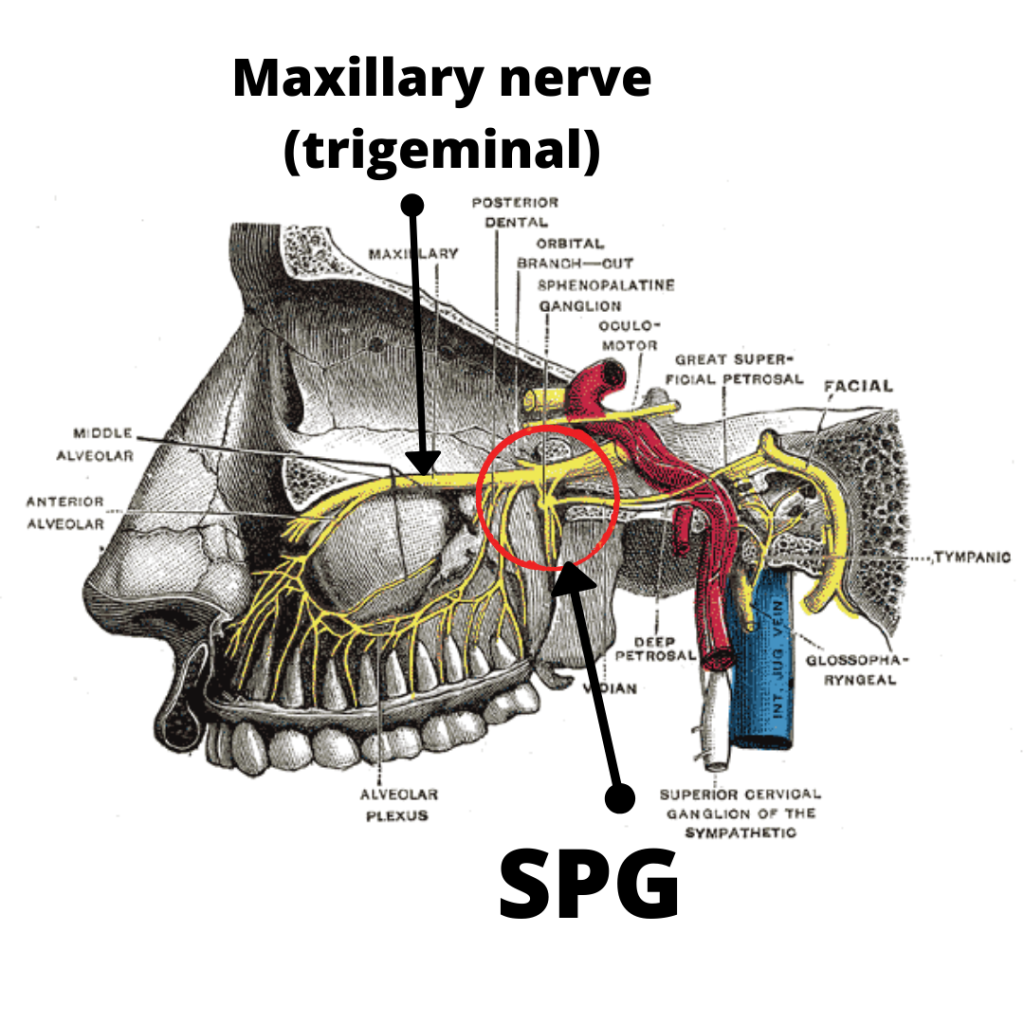Neurons are made up of cell bodies and finger-like dendrites. A ganglion is a clustered bundle of nerve cell bodies and associated dendrites assembled together to accomplish a discrete function. For example, the sphenopalatine ganglion (SPG) is located deep between the eyes. Among its many functions are regulating blood flow in the turbinates and facial bones and control of the tear ducts.
Ganglia are found throughout the nervous system. There are spinal ganglia, cranial nerve ganglia, autonomic ganglia (involved with the sympathetic and parasympathetic pathways,) and basal ganglia in the brain.
Ganglia act as junction boxes within the nervous system. They can pre-process information from neurons coming into them and relay that information along nerve bundles to the brain.
The Sphenopalatine Ganglion (SPG)
The sphenopalatine ganglion (SPG – also known as the pterygopalatine ganglion) is an important cranial nerve junction. Many people who have persistent migraines, cluster headaches, new daily persistent headaches (NDPH) or temporomandibular (TMJ) pain have heard of the SPG because of treatment options that involve blocking that ganglion.

The SPG is a parasympathetic ganglion. Most of the information coming into the SPG is from the facial nerve (Cranial Nerve VII), which innervates the muscles that control facial expressions. The facial nerve also receives taste information from the back of the tongue. The SPG is also connected to the maxillary nerve (the second branch of the trigeminal nerve (Cranial Nerve V.)) The maxillary branch of the trigeminal nerve includes the roof of the mouth (where you feel pizza burn) and the upper teeth. When a dentist gives you a shot of novocaine to numb your back upper teeth, they are blocking the second branch of trigeminal nerve.

The SPG is located deep inside your head, all the way at the back of the sinus cavity. It is protected by tissue and the thin bone you see through the nasal opening in a skull. It is in-line with the middle concha of the turbinate bones in your nose and directly above where the back of your soft-palette ends in your throat. So, quite deep inside your head, but still accessible through the nose.
Cranial nerves and ganglia: A complex mix
Migraines, headaches, and trigeminal neuralgia are all neurological conditions linked to cranial nerves. It is easy to see how damage could occur to the many small facial bones and the myriad sensitive nerves that run through the mouth, sinuses, eyes, face, ears, and head. Problems in the sensitive neck and spine areas can cause inflammation that spread to the cranial nerves. Soft tissues around the sinus bones (turbinates) swell and change size daily and with weather. The sinus tissues are highly reactive to allergens, bacteria, and viruses. Head injuries, concussions, broken noses, and developmental abnormalities like deviated septums, blocked sinuses, or ear infections can all lead to inflammation of tissues and nerves. Any of these problems can lead to chronic pain.
Check out the 1step2life app!
Start where you are. Set your own goals. Take back your life. A tool for tracking goals, emotions, and success, not just logging pain. And the only app that has a mode specifically for parents, partners, and other carers that supports effective coaching and strong relationships.


